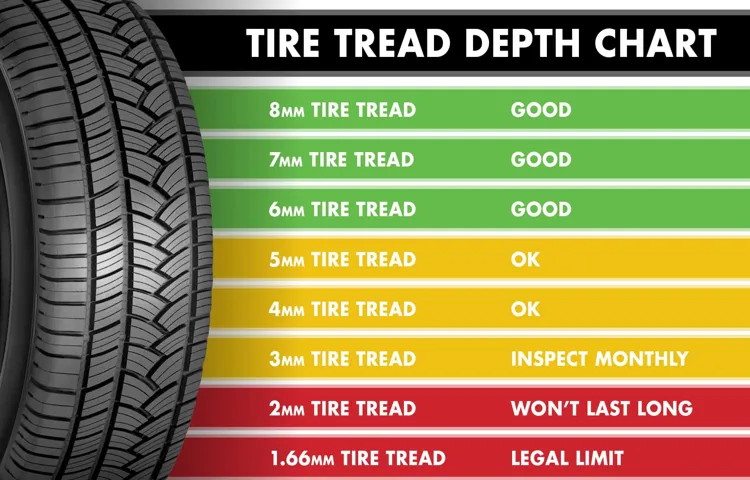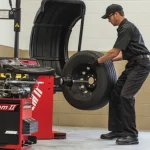As the owner of a tire shop, you may be wondering how much revenue you can expect to make on a monthly basis. The truth is that the amount can vary greatly depending on a variety of factors, such as location, competition, and pricing strategy. However, with the right approach and a solid marketing plan, you can increase your revenue and grow your business.
In this blog post, we will explore the factors that contribute to tire shop revenue, provide some tips for boosting sales, and give you a better idea of what to expect in terms of monthly income. So, get ready to learn how to maximize your tire shop’s potential and take your business to the next level!
Table of Contents
What Factors Affect Tire Shop Revenue?
When it comes to tire shop revenue, there are several factors that can influence how much money a shop makes each month. Firstly, the location of the shop can be a major factor in revenue, as shops located in high-traffic areas tend to make more money due to increased visibility. Next, the types of tires sold can also play a role, as high-end or specialty tires can bring in more revenue than basic or standard tires.
Additionally, the services offered by the shop, such as maintenance, repairs, and installations, can impact revenue as well. Finally, the level of competition in the area can also affect tire shop revenue, as shops may need to offer competitive pricing or promotions to attract customers and stand out from the competition. Overall, tire shop revenue can vary greatly depending on a multitude of factors, but a combination of a strong location, quality products and services, and competitive pricing can help to maximize profits and establish a successful business.
So, if you are looking to open a tire shop or improve the revenue of your existing shop, it’s important to consider these factors and make strategic decisions to ensure long-term success.
-Location
Location When it comes to tire shop revenue, the location is one of the most critical factors. A tire shop’s location affects how many potential customers it can attract, as well as how much they are willing to pay. Tire shops located in high-traffic areas or near major highways tend to have a higher volume of customers and, thus, generate more revenue.
Additionally, the type of clientele in the area can impact the success of a tire shop. For example, a tire shop located in a low-income area may not see a lot of business, while one in a suburban area may have higher-priced items and services more in demand. It’s important for tire shop owners to research their potential customer base and select a location that meets their business goals.
Ultimately, a tire shop should be located in an area that is easily accessible, has a desirable customer base, and aligns with the shop’s pricing strategy. By considering location as a key factor in their business strategy, tire shops can maximize their revenue.

-Size of Shop/Number of Bays
When it comes to running a successful tire shop, the size of your shop and number of bays can greatly impact your revenue. A larger shop with more bays means you can service more customers at once, which can lead to higher profits. Additionally, having a larger shop can also attract more customers, as it gives the impression of a more established business.
However, it’s important to note that the size of your shop should be based on your market demand and budget. It’s better to have a smaller, well-managed shop than a larger one that’s inefficiently run. Ultimately, the key to success in the tire industry is providing excellent customer service and quality work, regardless of the size of your shop.
-Range of Services Offered
When it comes to tire shop revenue, there are a number of factors that can play a role in determining success. One of the most important factors is the range of services offered by the shop. A tire shop that offers a wide range of services, including tire sales, installation, repair, and maintenance, is more likely to attract customers who need a variety of services.
In addition, the level of expertise and experience of the shop’s staff can play a role in determining revenue. A shop with skilled technicians who can provide high-quality service is likely to earn repeat business and positive reviews, leading to increased revenue over time. Other factors that can impact tire shop revenue include location, pricing strategy, and marketing efforts.
By focusing on offering a range of services and hiring skilled staff, tire shops can position themselves for success in a competitive marketplace.
What is the Average Tire Shop Revenue Per Month?
If you’re considering starting a tire shop business or just curious about how much tire shops make per month, the answer varies widely depending on the location, size, and services offered by the shop. According to the IBISWorld report, the average annual revenue for tire stores in the United States is $34 billion, which translates to approximately $8 billion per month.
However, keep in mind that revenue for individual tire shops can range from a few thousand dollars to millions of dollars each month. Factors such as the quality of the tires sold, the level of customer service provided, and the addition of other services such as oil changes or alignments can impact revenue, as well as geographic location and competition in the area. It’s essential to conduct thorough research and develop a solid business plan to ensure a profitable tire shop operation.
-Industry Statistics and Data
“average tire shop revenue per month” The average tire shop revenue per month can vary greatly depending on several factors. Location, size of the business, and services offered can all play a significant role in determining the revenue. According to recent industry statistics, the average tire shop revenue per month ranges between $20,000 and $50,000.
However, high-performing tire shops can generate significantly greater revenue per month, sometimes even exceeding six figures. To increase revenue, tire shops can incorporate specialized services such as wheel alignments, balancing, and oil changes. Offering high-quality products and excellent customer service can also help to increase revenue.
By providing the best possible customer experience, tire shops can build customer loyalty and drive repeat business. It’s important for tire shops to track their revenue regularly and make data-driven decisions to optimize their business operations and maximize their profit margins.
-Case Studies of Successful Tire Shops
When it comes to tire shops, it can be difficult to determine what the average revenue per month may be. The reality is that the revenue can vary greatly depending on a number of factors. For example, the size of the shop, the location, and the types of services offered can all play a significant role in determining the revenue.
However, according to several case studies of successful tire shops, it is not uncommon for a tire shop to generate around $100,000 in revenue per month. Of course, this is just an average and some shops may generate significantly more while others may generate less. Additionally, it is important to note that these figures can fluctuate from month to month depending on a number of different factors such as seasonal changes, economic conditions, and competition in the market.
Overall, if you are considering opening up a tire shop, it is important to do your research and analyze your local market to determine what kind of revenue is possible for your specific business.
How to Improve Tire Shop Revenue?
If you own a tire shop, you may be wondering how much revenue it’s possible to generate each month. The truth is that there’s no one-size-fits-all answer to this question, as income can vary widely depending on various factors such as location, competition, and inventory. However, there are steps you can take to improve your shop’s revenue.
First, make sure you’re offering a wide variety of tires to appeal to different budgets and driving needs. Consider offering additional services such as wheel balancing and alignment, which can be a profitable upsell. It’s also important to stay on top of your inventory and place orders regularly to ensure you always have what your customers need.
Finally, focus on building long-term relationships with your customers by offering excellent customer service and incentivizing returning business. By taking these steps, you can increase your tire shop revenue and establish a loyal customer base.
-Investment in Equipment and Technology
If you’re looking for ways to improve your tire shop revenue, investing in equipment and technology is a great place to start. By upgrading your tools and systems, you can streamline your operations and provide faster, more efficient service to your customers. For example, investing in high-quality tire balancing and alignment machines can reduce the time it takes to complete these tasks, improving your overall productivity and customer satisfaction.
Additionally, implementing a digital customer management system can help you keep track of appointments, inventory, and customer preferences, making it easier to provide personalized service and build long-term relationships with your clients. Overall, investing in equipment and technology can help you stay competitive in a rapidly changing industry and attract new business while keeping your current customers happy and satisfied.
-Marketing and Customer Service Strategies
Tire shops are always looking for ways to increase revenue, and implementing effective marketing and customer service strategies can make a big difference. One way to improve revenue is by offering promotions or discounts to customers, such as buy-one-get-one-free deals or seasonal sales. Another effective strategy is to prioritize customer service, ensuring that employees are friendly, knowledgeable, and helpful.
Positive customer experiences can lead to repeat business and referrals, both of which can boost revenue. Utilizing social media to showcase happy customers and positive reviews can also help attract new business. Additionally, offering services beyond just selling tires, such as oil changes or brake repairs, can create more opportunities for revenue.
By implementing these strategies, tire shops can improve their bottom line and stand out in a competitive market.
Conclusion: Is Running a Tire Shop Profitable?
In conclusion, much like a well-inflated tire, the answer to the question “how much do tire shops make a month” can vary greatly depending on multiple factors such as location, competition, and services offered. However, one thing is for certain, tire shops are in high demand as they provide an essential service for the safety and longevity of our vehicles. So, if you’re looking to invest your money in a profitable business, don’t let this opportunity roll away!
FAQs
How do tire shops generate revenue from their services?
Tire shops generate revenue through services such as tire sales, tire installation, tire repair, and tire rotations.
What is the average profit margin for tire shops?
The average profit margin for tire shops varies depending on the location, size of the shop, and services offered. However, on average, tire shops make a profit margin of 20-30%.
Can tire shops offer financing options to customers?
Yes, many tire shops offer financing options such as installment plans or credit lines to help customers cover the cost of their services.
What factors affect the monthly earnings of a tire shop?
Factors such as location, competition, marketing strategies, inventory management, and customer service can all affect the monthly earnings of a tire shop.
How do tire shops manage their inventory to maximize profits?
Tire shops typically use software solutions to track their inventory levels and accurately predict demand for specific tire brands and sizes. This helps them optimize their inventory to maximize profits.
Are there any seasonal trends that impact tire shop earnings?
Yes, tire shops typically see a surge in business during the fall and winter months as customers prepare their vehicles for colder weather.
What are some common marketing strategies used by tire shops to attract customers?
Tire shops often use tactics such as social media ads, email marketing, promotions, and loyalty programs to attract and retain customers.



